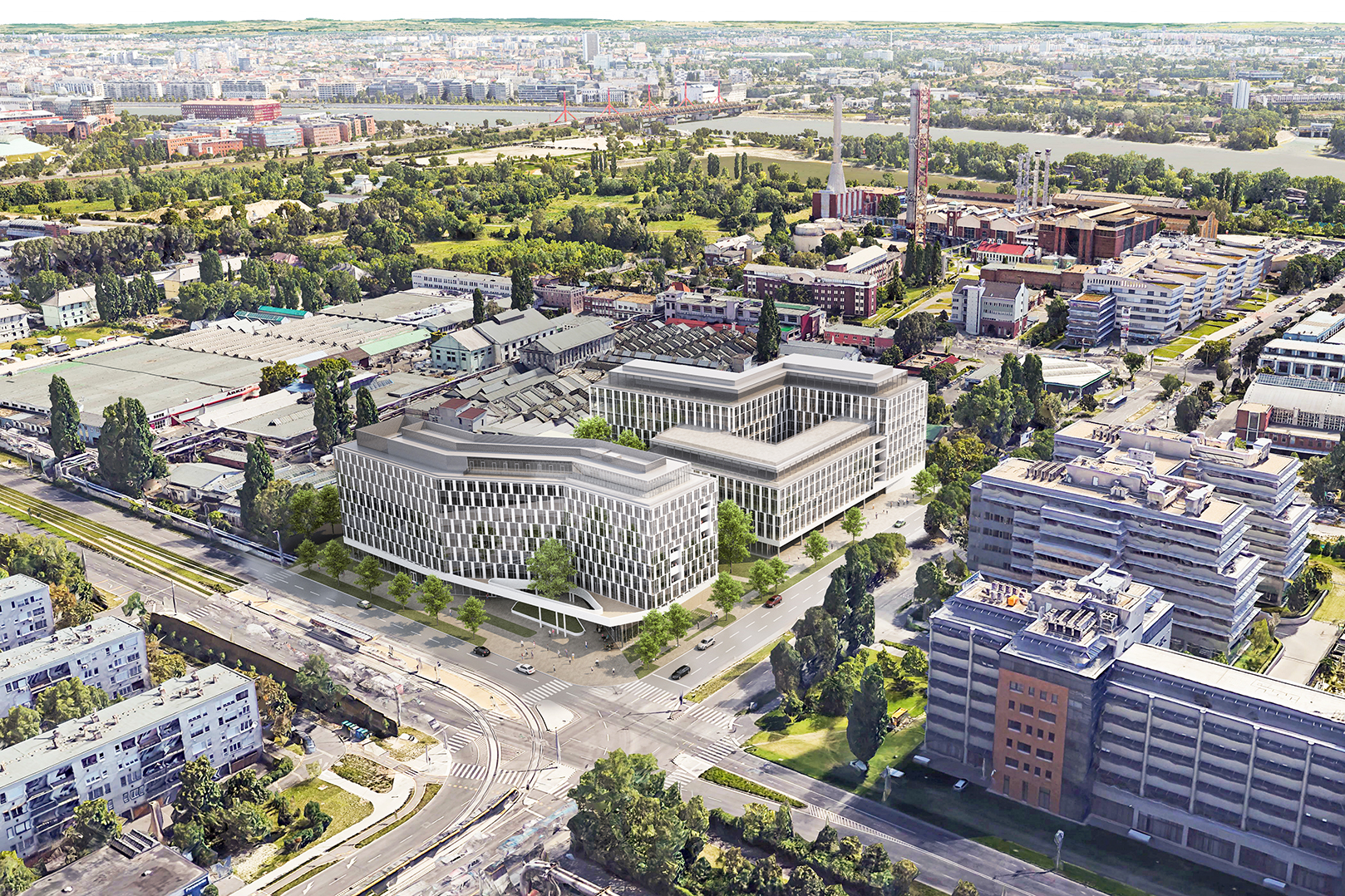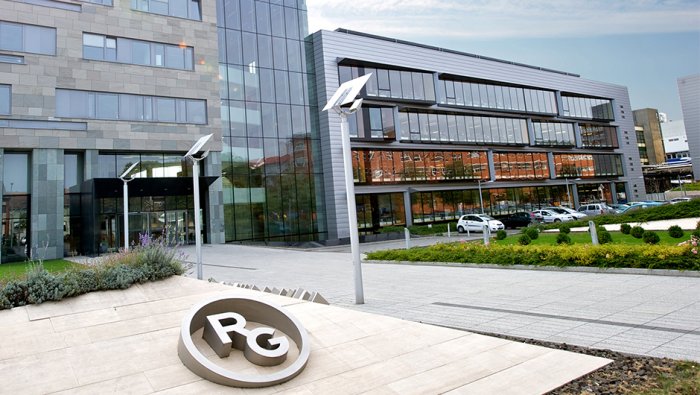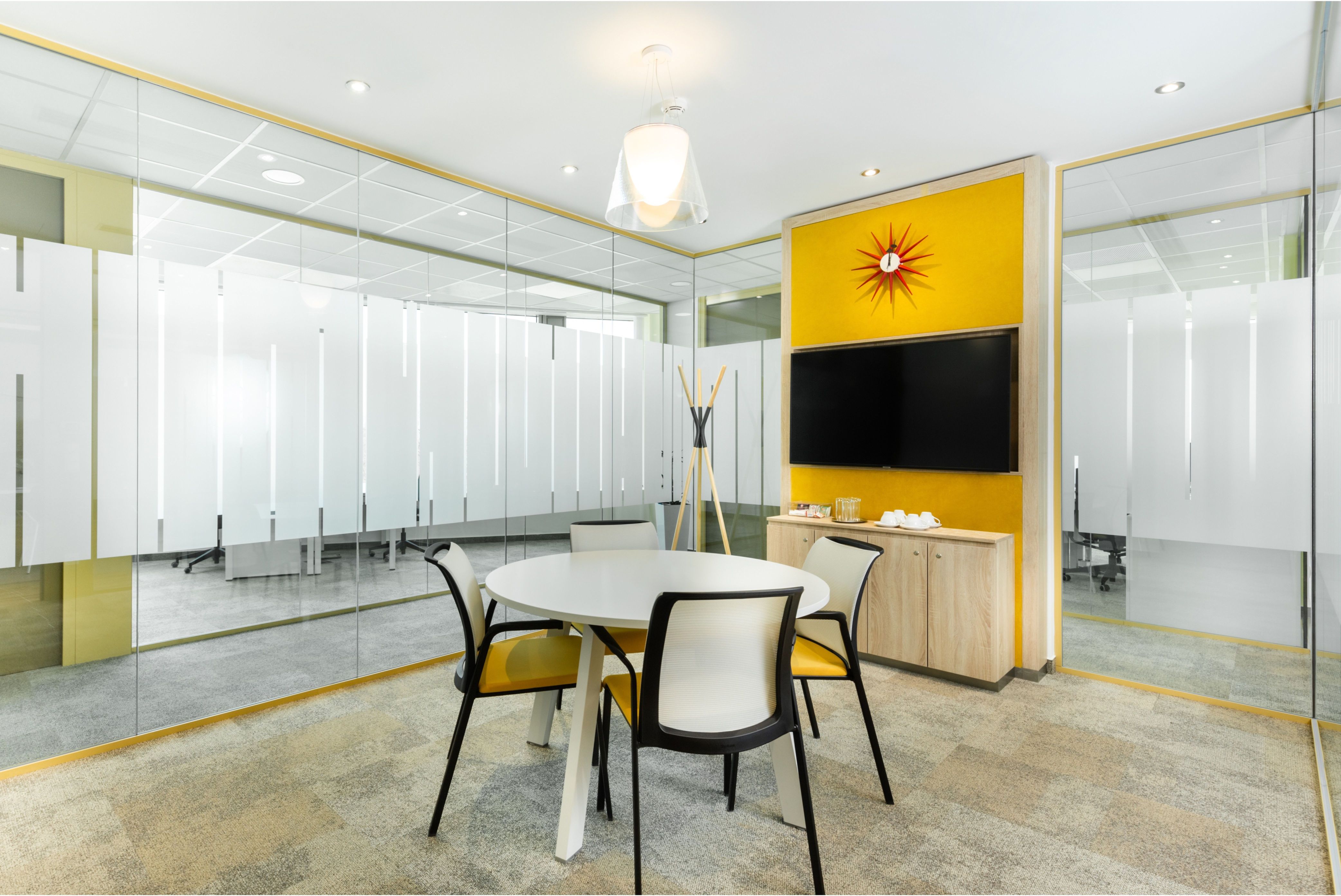Subdued Office Development Activity for 2023

BakerStreet by Atenor.
A limited number of office development projects are expected to be undertaken in the immediate future. Developers are exercising caution given an uncertain geopolitical and economic market environment that impacts development costs, debt financing, leasing and take-up, maintenance and property management fees, as well as the possibility of an exit strategy.
However, several office developers are going ahead with new-build and renovation projects in various locations across the city with the confidence that leases can still be concluded for quality, well-located, sustainable office developments.
“There is a delay in the speculative office development pipeline, except amongst developers not heavily reliant on external financing. However, at the same time, there is increasing market demand from occupiers for future-proof, sustainable, energy-efficient office projects,” comments Kata Mazsaroff, managing director of Colliers Hungary.
Total supply in the Budapest office market has reached 4.3 million sqm according to the Budapest Research Forum (BRF), consisting of CBRE, Colliers, Cushman & Wakefield, Eston International, JLL, and Robertson Hungary. Cushman & Wakefield has traced 3.5 million sqm of this as developed on a speculative basis.
From a developer perspective, Dömötör Károly Makk, head of leasing at TriGranit, comments that although increased demand might decline slightly in 2023, the need for “A+” category, sustainable offices is expected to remain solid.
Mátyás Gereben, country manager at CPI Hungary, says that occupiers are reluctant to secure long-term leases or expand their businesses in the current economic situation.
With regard to the quality of stock in Budapest, European and established national developers such as Skanska, Atenor, CPI, Futureal, GTC, HB Reavis, Horizon Development, Property Market, TriGranit, and Wing have common sustainable development policies across their portfolios.
Essentially the market is seeing a growing demand-side gap between high-end, well-located, ESG-conforming office assets and earlier-generation buildings.
Overall volume is muted for the next cycle; the forecast completion volume adds up to 180,000 sqm for 2023 and only 122,000 sqm for 2024 (including already pre-committed space), according to CBRE. A further 45,000 sqm of outdated space is due to be updated into modern, ESG-compliant offices.
Notable Refurbishments
Avison Young has traced 20 office projects representing 274,000 sqm of space under construction or already delivered this year. The largest project under construction is the 40,000 sqm Dürer Kert by Property Market. Notably, there are five refurbishment projects, including the 30,000 sqm CenterPoint 1-2 on Váci út by GTC, and the 10,000 sqm Academia by ConvergenCE and Europa Capital in the central business district.
A further five projects under construction and representing 105,000 sqm of space are due to be completed in 2024. Significantly, three of these are the second phases of ongoing projects by prolific developers, including the 24,000 sqm BakerStreet II by Atenor, the 22,000 sqm H2Offices by Skanska, and the 20,000 sqm Liberty North by Wing.
“There are still a few speculative office building developments ongoing, but fewer developments have started than in previous years. GTC believes in the development of the office market, which is why we started the construction of our Centerpoint 3 office building,” says Zsolt Berényi, development director at GTC Hungary.
“We believe that tenants are increasingly looking for efficiency, both from operational and maintenance perspectives. There is also a need for much more sustainable, energy-conscious, and socially space-driven office buildings in the supply market that can serve the tenants’ ESG strategy. Currently, only a few office buildings on the market can satisfy these needs,” he adds.
ConvergenCE has completed the 10,000 sqm Academia office renovation project in the CBD. “We do not undertake the development of new buildings from the ground up but focus on value-add developments of existing buildings that require refurbishment,” explains Csaba Zeley, managing director of the firm.
“Value-add development is favorable in the current environment as it does not require a prelease, which is needed to gain the finance for a new-built project,” he notes. And nor is ConvergenCE alone in its approach.
“As an international sustainable urban real estate developer, renovation seems like the most attractive option for us for many reasons. Renovation does not always present itself as the most financially beneficial solution, but it is, without a doubt, one of the most sustainable ways of property development,” comments Máté Galambos, leasing manager at Atenor Hungary.
“We have beautiful, historical buildings in the central business district of Budapest, most of them with amazing façades, which is why I believe that taking on the noble responsibility of a CBD refurbishment project (where some of the structural elements are saved and the heritage-protected elements of these buildings are adequately reinstated) is not only a really smart thing to do but also the most forward-thinking in our current climate,” he argues.
High Absorbtion
On the demand side, net absorption for 2022 was the second highest on record, exceeding 2019 levels, according to Cushman & Wakefield. Occupiers are increasingly focusing on ESG criteria, which will accelerate the absorption process.
Annual take-up increased last year to 247,000 sqm, an increase on the previous year. However, owner-occupier take-up represented 13% of this, says CBRE.
The overall vacancy rate for Budapest now stands at 11.3%. However, most analysts do not consider this increasing overall vacancy rate a concern. Cushman & Wakefield see much of the vacancy in older, outdated stock. Discount this, and the more realistic vacancy rate is 7-8%; with an undersupply of modern, quality office stock and a low pipeline for 2024, this will fall further.
Notably, there will be a fall in the vacancy rate for more modern, higher quality stock, an indication of the widening gap between old and new that is also reflected in rents and yields, according to Mike Edwards, head of capital markets at Cushman & Wakefield Hungary.
Office remains the most favored investment sector, with around 40% of the recorded investments for 2022. CBRE put current prime office yields at 6%, up by 75 basis points and back at 2018 levels.
“While core offices are still attractive, the segment is primarily reliant on all-equity buyers in light of current interest rates inching towards 6% for those seeking external financing,” says the consultancy.
The market perception gap between vendors and buyers remains, and few transactions are being concluded.
“Although there is little transactional evidence, prime Budapest office prime yields can be estimated at 5.75-6%,” comments Benjamin Perez-Ellischewitz, principal at Avison Young Hungary.
This article was first published in the Budapest Business Journal print issue of May 5, 2023.
SUPPORT THE BUDAPEST BUSINESS JOURNAL
Producing journalism that is worthy of the name is a costly business. For 27 years, the publishers, editors and reporters of the Budapest Business Journal have striven to bring you business news that works, information that you can trust, that is factual, accurate and presented without fear or favor.
Newspaper organizations across the globe have struggled to find a business model that allows them to continue to excel, without compromising their ability to perform. Most recently, some have experimented with the idea of involving their most important stakeholders, their readers.
We would like to offer that same opportunity to our readers. We would like to invite you to help us deliver the quality business journalism you require. Hit our Support the BBJ button and you can choose the how much and how often you send us your contributions.








